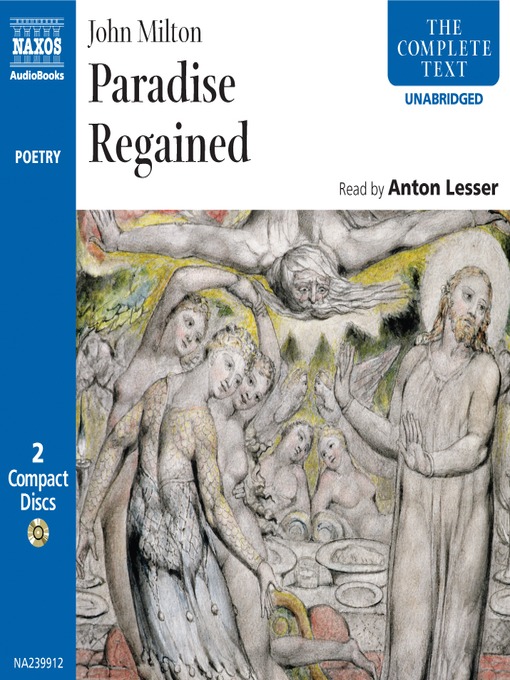

Moreover, my thesis constructs a conceptual understanding of Satan, Milton's prominent character, and analyzes Satan's depiction in each epic as they are contingent upon each other. Milton redefines his first presentation of a hero as he realizes what he was capable of in Paradise Lost and how he must correct his mistakes for the sake of the reader in Paradise Regained. In Paradise Regained, Milton emphasizes the human elment of hunger, both spiritual and physical.

eNotes critical analyses help you gain a deeper understanding of Paradise Regained so you can excel on your essay or test. In realizing his error in depicting Satan as heroic, Milton furthers the correction of his error, that being his temptation of the reader to fall with mankind, in Paradise Regained by exceeding the role of the Son of God. Discussion of themes and motifs in John Milton's Paradise Regained. Satan is no longer depicted as a tragic hero, but is portrayed as an entirely malicious being who has no sign of ever having regretted his actions or sentiments. Moving onto Milton's second epic, Paradise Regained (1671), presents a new problem for the reader as the Satan that he became close to in Paradise Lost is non-existent. Embodying the classification of tragic hero, Satan has both made an error in judgment and was overcome by a tragic flaw that brought about a devastating calamity. Although deplorable and malevolent, the Satan of Paradise Lost appeals to the reader, and his actions and thoughts are easily agreed upon. The poem tells the story of Satan trying to tempt Jesus Christ like he tempted Adam. AbstractOne of the most imposing themes of John Milton's Paradise Lost (1667) is the depiction of Satan as heroic. Paradise Regained is a poem by John Milton, consisting of four books.


 0 kommentar(er)
0 kommentar(er)
